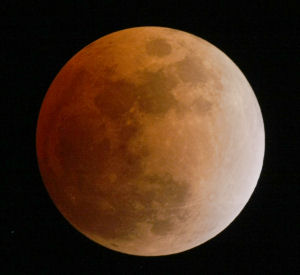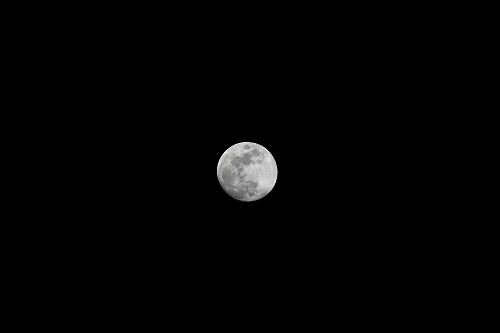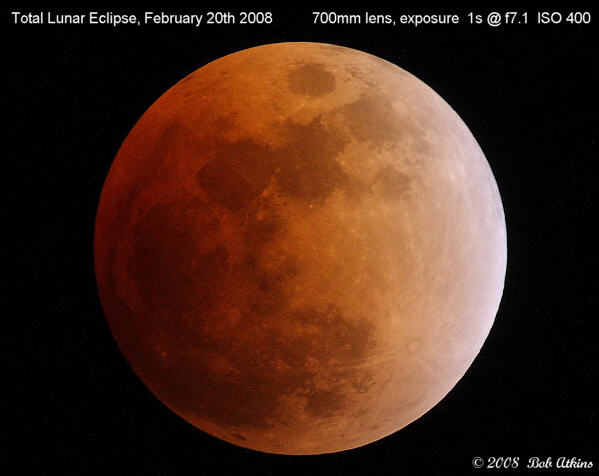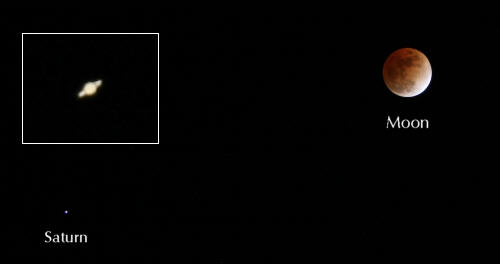

Lunar Eclipse Photography
On February 20th 2007 North America will see the last total lunar eclipse for almost 3 years. The next such eclipse visible from North America will take place on December 21st 2010, so if you miss this one, you'll have a long wait!
A total lunar eclipse occurs when the moon moves fully into the shadow cast by the earth. This means that the sun, moon and earth are in a straight line with the earth between the moon and the sun. Such eclipses can only occur at the time of the full moon. If the moon is only partly covered by the earth, the result is a partial eclipse.
During a total lunar eclipse, the moon dims, but how much it will dim isn't easily predictable. When in the earths shadow the only light falling on the moon is that light which is refracted, diffracted or scattered by the earth's atmosphere. As seen from the moon the earth would be surrounded by a bright ring, the earth's atmosphere, and that would be the only light source. How bright that light is depends on how much dust there is in the air, the amount of cloud cover etc. The more dust, the more light is absorbed and the less directed towards the moon. After major volcanic eruptions for example, lunar eclipses can be very dark.

The average eclipse, which this one is expected to be, results in the moon becoming a fairly dim red or copper color.
Here's a shot of the moon taken less than an hour ago (Feb 19th 2008) using a Canon EF 70-300/4-5.6 IS USM lens at 300mm. The exposure was 1/800s at f7.1 using an ISO setting of 400. This is a typical exposure for the full moon.

As you can see, the moon doesn't fill much of the frame, even with a 300mm lens, but there is quite a lot of detail there as the 100% crop of just the moon shows below. It also demonstrates the quality of the Canon EF 70-300/4-5.6 IS USM lens.

When the moon is in total eclipse however, the exposure must be much longer. Since we don't know in advance just how bright the eclipsed moon is going to be it's not possible to give exact exposure recommendations. At ISO 400 with an f5.6 lens, the exposure could be anywhere from about 1/2s for the brightest of eclipses to around 120s for a very dark eclipse. This wouldn't be a problem if the earth didn't move across the sky, but of course it does. If the moon moves during the exposure, the image will be blurred, so you either have to use a short exposure or mount the camera on a tracking mount.
Assuming you don't have a tracking mount, how short does your exposure need to be for a sharp image? That depends on the focal length of the lens you are using. Here's a list of recommended maximum exposure times for maximum sharpness.
- 1000mm - 0.5s
- 500mm - 1s
- 300mm - 1.6s
- 200mm - 2.5s
- 100mm - 5s
- 50mm - 10s
- 24mm - 20s
What this means is that if the moon is dim and you're using a long lens, you may need to use a high ISO setting. For what might be a "typical" eclipse, if you were using a 500mm lens at f5.6 and wanted a 1s exposure time, you'd have to use an ISO setting of 1600. You might get away with 2s, but 1s is safer if you expect to crop and enlarge your image.
Since the moon takes up only a small part of the frame, you can't depend on autoexposure unless you have a spot meter which meters over an area smaller than that of the moon. However with digital cameras you can quickly see if your exposure if off and make adjustments accordingly.
The most difficult exposures occur when the moon is only partly eclipsed, since part of the moon will be very bright and part will be quite dark. There could be anywhere from 10 to 20 stops difference in brightness, which will almost certainly exceed the dynamic range of any digital camera (or film come to that). If you want detail in both the bright and dim areas, you'll need to take two exposures, one optimized for the bright part and one for the dark. Then you can combine parts of the two images later in Photoshop (or whatever image editor you use).
If you don't have a long lens, you can take multiple exposures with the camera in a fixed position, as show how the moon changes as it crosses the sky. You can then combine them into one shot digitally.
So if you have clear skies on the Evening of February 20th 2008, go out and take some pictures. If you live in North America you won't get another chance until December 21st 2010. Unlike a solar eclipse where things happen fast and it can all be over in less than a minute, you'll have plenty of time with this one.
Here are the eclipse timings:
- Partial phase begins - 8:43pm Eastern (5:43 Pacific)
- Total phase begins - 10:01pm Eastern (7:01 Pacific)
- Total Phase ends - 10:51pm Eastern (7:51 Pacific)
- Partial phase ends - 12:09am Eastern (9:09 Pacific)
UPDATE: 02/21/08 - Well, we got lucky in the NYC area last night and the clouds cleared out just in time to see the eclipse. The image below was taken during the start of the total phase. I used a 500mm f4.5L lens with a Tamron 1.4x TC attached. The camera was an EOS 40D and this particular shot was saved as a RAW image and converted using DPP.

Since Saturn was just to the left of the moon, I pointed the lens (700mm) at it and took a shot (1/10s @ f6.3, ISO 400) and the result (at a 100% crop) is shown below in the small inset image. I was quite surprised to see the rings show up so clearly! The wide shot was cropped from an image taken at 115mm with an EF 70-300/4-5.6IS USM.

